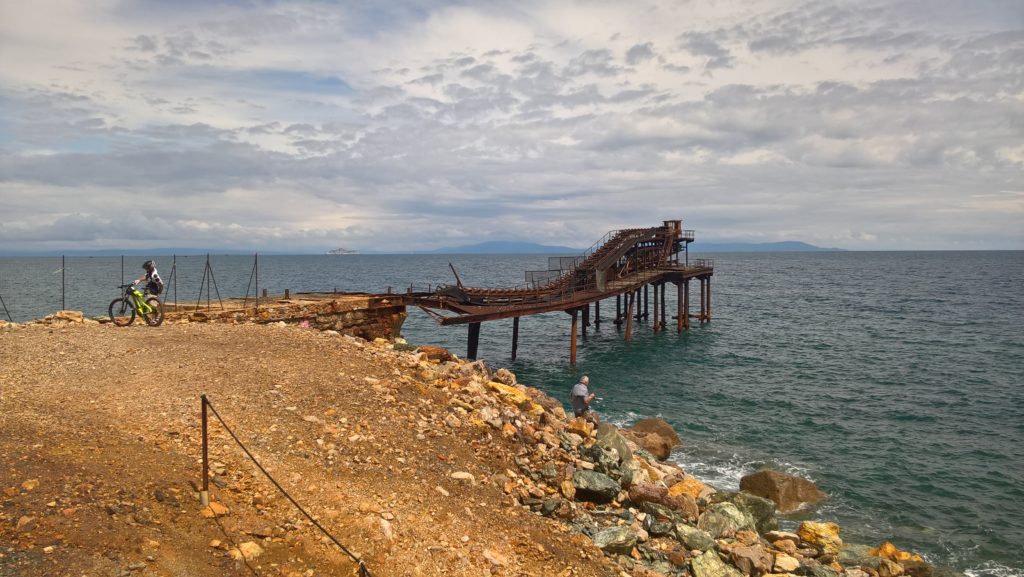A few decades ago, when the Island of Elba still hadn’t reached its current touristic development, Its east coast, from Cavo to Punta Calamita, had the highest concentration of mines present on Italian territory. The hills situated behind Rio Marina were devastated by the construction sites of one huge extraction area from which wonderful examples of hematite came from, sometimes iridescent, and also pyrite, both cubic and pentagonal dodecahedral, and of goethite, under the form of shiny black geodes, often reaching considerable dimensions; minerals which are essential in any museum display and in the main collections from all over the world.
The main economic activity of the island was therefore made up of iron mines where thousands of workers were employed both outside and in the underground yards, guaranteeing Italy complete self-sufficiency for the supply of this metal. The sound of the tide arriving on the beaches of sand shining with crystals was practically always covered by the clanging of the enormous bulldozers and excavators which turned the hills inside out in search of iron. Now and again the loud banging of the mines echoed, while the conveyors belt loaded the minerals onto ships.
The second activity in order of importance was agriculture, which manufactured fine wines put onto the market, followed by fishing, facilitated by the particular coastal structure.
The main expectations however were based on tourism, a tourism which at the start was mainly mineralogical, practiced by enthusiasts from all over attracted not only by the minerals, but also by the extraordinary beauty of the place, which makes the Island of Elba one of the favourite destinations for those in search of an always crystal-clear sea, charming beaches and fantastic inlets.
Towards the end of the last century the mining activity ceased. The scars on the hills left by the mines are gradually being hidden by a lush vegetation. However the imposing rusty metal structures of the mines remain, testifying the grandeur of times gone by. For those who want to make a trip back in time the possibility remains to visit the mythical underground mine of Capo Calamita, which hosts an enormous deposit of pure magnetite (still plentiful) or the open air mines of Rio Marina, where the the local tourist board organizes guided tours.
A place of great educational value is the Little Mine of Porto Azzurro, an artificial underground environment where the various aspects of the extraction activity have been marvelously reproduced.
There are numerous mineral shops, the samples for sale mostly come from far away, like the pyrite, alas, from Perù a Spain, and the quartz from Brazil.
Today the predominant activity is tourism, with hundreds of tourist accommodation facilities of excellent level, which offer tourists competence, courtesy and professionalism at a generally reasonable price, which in the low season can be surprisingly cheap.










